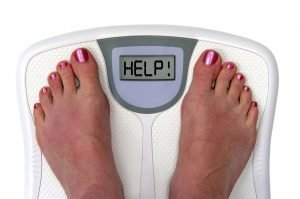 by: Ronald Freudenberg, Jr., MA, LPCC-S
by: Ronald Freudenberg, Jr., MA, LPCC-S
Outpatient Therapist, Lindner Center of HOPE
Anxiety can take many forms. Anxiety is also one of the most common reasons one might seek out mental health treatment. In this blog, we will explore some of the most frequently occurring anxiety disorders, as well as panic attacks, which can be part of a Panic Disorder (but do not have to be, as will be discussed later). We will also look at effective strategies for preventing, treating, and managing anxiety disorders and symptoms of anxiety.
Regardless of how anxiety may present for one person, the various anxiety disorders all have at least one thing in common…fear. Whether it is described as worry, nervousness, feeling “on edge,” or something else, the basic emotion of anxiety is fear. We all experience some anxiety sometimes, and in fact, you may have heard that a little bit of anxiety can be a good thing from time to time. It serves a protective purpose when it tells us to avoid people, things, or situations which could be dangerous. Anxiety can also help us by keeping us on our toes and motivating us to perform well under pressure, such as when pulling an all-nighter before an exam, giving a big presentation at work, or playing in the championship game. Yet, as with any negative emotion, anxiety can become problematic when it becomes too frequent, too intense, lasts for too long, or interferes with our lives and our ability to function well, as can happen in the context of the following types of anxiety disorders.
Types of Anxiety Disorders

Adjustment Disorder
Sometimes, one may feel excessively stressed or anxious about a certain thing or things in one’s life. People often describe this as “situational”, and the clinical term is an Adjustment Disorder with Anxiety. (It can also present with depression, or other emotional/behavioral responses.) An example might be if one would experience something stressful like the loss of a job. Of course, most people would likely feel some anxiety about this. However, an adjustment disorder is thought of as when one’s response is out of proportion with what may be typically expected. With this type of anxiety, once the stressor has resolved, so will the anxiety. So, when that same individual lands a new job, he/she/they will feel better, simply put.
Generalized Anxiety Disorder
Generalized Anxiety Disorder is very much like it sounds. This is when a person feels generally anxious, worried, and nervous much of the time (more than half of their days) about any number of different subjects. In order to meet criteria for the diagnosis, one must experience this type of anxiety for at least six months, find it difficult to control the worry, and present with at least some of the following additional symptoms: restlessness, trouble concentrating, irritability, muscle tension, sleep difficulties, and/or trouble concentrating. Although every person is unique, classically, a person with GAD may tend toward long-term anxiousness, worry excessively about many things (such as finances, family, work, health, world events, etc.), and lay awake in bed at night doing so.
Phobias
Specific Phobias are another type of anxiety disorder in which a person experiences strong fear and anxiety about a specific thing (object or situation), and actively avoids that thing or endures exposure to it with intense discomfort. In this writer’s experience it is relatively rare for this to be a person’s main reason for seeking treatment, at least in outpatient settings. Perhaps that may be because many anxiety-provoking subjects can be pretty easy to avoid. (When was the last time you unexpectedly came across a snake?)
Social Anxiety Disorder
An exception to anxiety that is easily avoided, is Social Phobia, also known as Social Anxiety Disorder. Social Phobia exists when the source of a person’s fear is social or performance situations in which one may feel subject to scrutiny or judgment by others. Social anxiety may arise when one feels uncomfortable mingling with new people at a party, walking through halls of (seemingly) glaring eyes at school, or giving a speech. From an evolutionary perspective, if anxiety helps us to avoid dangerous things which threaten our survival, being ostracized from one’s tribe and forced to try to survive alone in the wilderness is near the top of that list. With this in mind, it is little wonder that public speaking is often cited as people’s number one fear.

Panic Disorder and Attacks
Finally, let us explore the issue of panic. So, what is a panic attack? Panic Attacks, according to the DSM-5, occur when a person experiences an “abrupt surge” of anxiety which reaches a peak within minutes and includes (at least four of) the following symptoms.
Symptoms of Panic Disorder and Attacks
- Racing/pounding heart
- Sweating
- Shaking
- Shortness of breath
- Choking sensations
- Chest pain
- Nausea
- Dizziness or feeling light-headed
- Chills or heat sensations
- Numbness/tingling
- Feeling of unreality or detachment from one’s self
- Fear of losing control, “going crazy,” or dying
When one develops a fear of having additional panic attacks and exhibits maladaptive behaviors designed to avoid or limit the likelihood of them, this is called a Panic Disorder. Further, if one’s fear and avoidance includes public situations away from home, open or enclosed crowded spaces from which it would be difficult to escape should panic-like symptoms arise, that is called Agoraphobia (which may, but does not have to, co-occur with Panic Disorder). Also, according to the most recent edition of the DSM, panic attacks are now thought to be a feature which may occur in the context of a spectrum of other mental health disorders, substance use disorders, and some medical conditions.
Treatment of Anxiety, including Treatment for Panic Disorder and Attacks
When it comes to treatment of anxiety, it is unrealistic for one to expect to live out the rest of their days, anxiety-free. One can no more be “cured” from anxiety, than from happiness, sadness, or anger. These are basic human emotions, and there are reasons why we have them. However, the good news is that anxiety symptoms, whether mild or debilitating, can be effectively prevented, treated and managed, usually by a multi-faceted approach.
How to Manage Anxiety, including Managing Panic Disorder and Attacks
Medications can often be a very helpful part of a person’s treatment plan. Antidepressants, such as SSRIs, and some SNRIs, are commonly used to treat ongoing symptoms of anxiety, while benzodiazepines (such as Xanax, Klonopin, Valium, or Ativan) are sometimes used on a shorter-term or as-needed basis to alleviate acute anxiety or panic. (Caution is usually advised with the latter due to their addictive potential.) Some antihistamines, beta-blockers, and anticonvulsants have been shown to be helpful for anxiety as well.
Various forms of talk therapy can be beneficial by providing a safe, supportive experience in which a person can process fears and learn to implement rational coping thoughts to overcome them. Therapy can also assist one to form new behaviors to mitigate symptoms of anxiety. Regardless of the specific therapy used, a common element is learning to approach, rather than avoid, that which causes one’s anxiety. Anxiety and fear lead to avoidance by definition, while summoning the courage to face and overcome our fears cuts them down to size (this is commonly referred to as “exposure”). Cognitive-Behavioral Therapies (CBT), Dialectical Behavioral Therapy (DBT, as well as Radically Open DBT), and mindfulness-based psychotherapies are common effective treatment approaches. Mindfulness can help one learn to be in and accept the present, increasing one’s capacity to tolerate feelings of discomfort while reducing anxious thoughts about the future.
Treating and Managing Panic Disorder and Attacks
In the case of panic attacks, it is advised to first rule-out any medical causes of the symptoms which can mimic other medical issues, specifically heart disease. If another person is present during a panic attack, they provide support and reassurance, helping the person to talk through it or asking what they need that may be helpful. In addition to medication, there are other helpful strategies for panic symptoms.
Strategies for Managing Symptoms of Panic Disorder and Attacks
- Breathing or relaxation exercises
- Physical exercise
- Mindfulness/grounding exercises (such as a sensory check-in)
Coping Skills for Anxiety, including Panic Disorder and Attacks
Therapy can also help a person develop effective coping skills for preventing and managing anxiety. These may vary depending on personal preferences, but can include increasing social supports, problem-solving for stressors, journaling, exploring spirituality, exercise/movement, etc. Practicing healthy self-care habits (such as getting regular exercise and restful sleep, managing health conditions, and minimizing/avoiding alcohol, caffeine and other drugs) and generally trying to live a balanced lifestyle can simultaneously help to reduce the stress one may experience in life, while increasing one’s ability to effectively cope with anxiety.
Summary: Anxiety is a common human experience, but persistent and debilitating anxiety, is often what causes people to seek treatment. There are a variety of types of anxiety. Panic or Panic Attacks are among the types of anxiety. Learn what are panic attacks, symptoms and causes and treatments for panic attacks and other anxiety disorders.
Learn more about panic attacks and anxiety.
 By: Dr. Nicole Bosse, PsyD, Lindner Center of HOPE
By: Dr. Nicole Bosse, PsyD, Lindner Center of HOPE


















